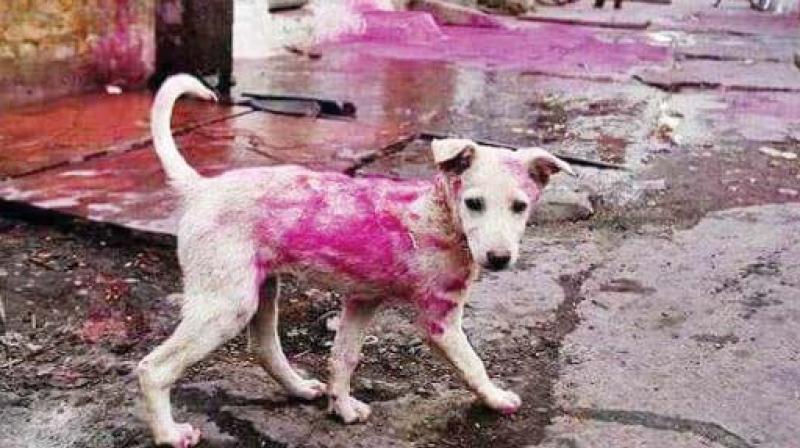Bengaluru: Raw deal for city's animals amidst Holi revelry

Bengaluru: It’s a festival of colour that has people happily roaming the streets with painted faces and clothes. But the Holi celebrations have a downside to them as the artificial colours sprayed on people in fun are loaded with toxic chemicals, making them vulnerable to skin disease. Sadly, its not just humans who are affected , but stray dogs too.
Going by a National Council of Pet Population Study and Policy, 15 to 20 per cent of dogs nationwide fall prey to some disease or the other during Holi and one out of every 10 dogs dies every year as a result of the colours used.
Health experts are not surprised as the manufacturers use lead oxide to produce the black colour spray, copper sulfate for the green and aluminum bromide for the silver, to name a few. Some powder colours also have tiny glass particles mixed in with them to add shine. “The dogs are extremely vulnerable during this time. People need to understand that playing Holi can really harm animals,” says Ms Rachel of the Haven Welfare Animal Trust in the city.
The NGO claims to have come across stray dogs with severe eye infection as a result of their contact with the colours. “The infection makes their eyes water constantly, blurring their vision. And some dogs end up panting and drooling due to ingestion of these toxic chemicals,” she adds. Besides dogs, stray cows and bulls also fall ill during Holi , according to her. "The cows and bulls drink from the drainage and puddle water that are mixed with these colours," reveals Ms Ritika Goel, founder of the Bengaluru chapter of People For Cattle India (PFCI).
Animal activists warn that if synthetic colours are left on animal skin for days they can cause blindness, skin and gastrointestinal infections and even the rare death. “Most of these synthetic colours have industrial chemicals that are extremely harmful to both humans and animals. Worse, dogs lick their skin and in the process consume these chemicals,” says Dr. Suranjana Ganguly, a veterinary doctor from Mysuru,who has treated diseased dogs with patches of missing fur.

